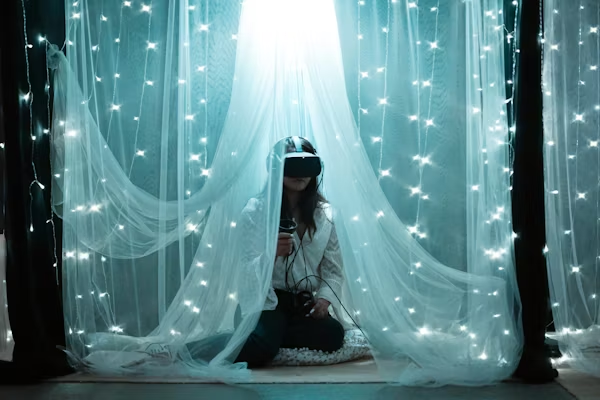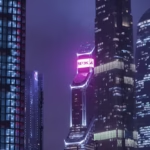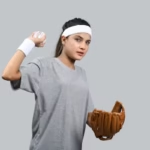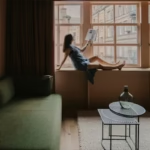In today’s digital era, creativity is constantly evolving, and the demand for unique, personalized visuals has never been higher. Whether it’s for digital art, marketing, social media, or virtual influencer creation, having tools that can generate consistent and customizable characters is essential. This is where RenderNet AI steps in—an innovative platform that harnesses the power of artificial intelligence to transform the way we create character-driven images and videos.
RenderNet AI is not just another image generator; it is a sophisticated ecosystem designed to bring your ideas to life with precision, consistency, and style. Through advanced technologies like FaceLock, ControlNet, and multi-model generation, RenderNet allows creators—from beginners to professionals—to develop characters that maintain continuity across various visuals, making it perfect for storytelling, branding, and digital experiences.
In this article, we will explore the many facets of RenderNet AI, its unique features, and why it is quickly becoming a game-changer in the creative world.
What is RenderNet AI?
At its core, RenderNet AI is a state-of-the-art platform that uses artificial intelligence to produce high-quality images and videos centered around customizable characters. Unlike generic image generators that produce random or inconsistent outputs, RenderNet focuses on character coherence, allowing users to maintain a consistent look and feel for their creations.
By combining several AI tools and techniques, RenderNet enables users to generate digital characters that can be tailored to specific needs—whether for animation, marketing visuals, or virtual influencers—without losing identity across different scenes or iterations.
How RenderNet AI Stands Out
What makes RenderNet AI unique compared to other AI art and video generation tools? It’s the platform’s dedication to consistency and customization. Many AI platforms produce one-off images with little to no relation to previous outputs, which is a challenge for projects needing recognizable characters over time.
RenderNet addresses this by integrating technologies such as:
FaceLock: This tool allows users to lock the facial features of a character, ensuring that each new image or video frame retains the same face and expressions, preserving identity across different scenarios.
ControlNet: A powerful feature that guides the AI on how to shape and position characters and elements, enabling greater control over the final output and reducing randomness.
Multi-Model Generation: RenderNet can combine various AI models, each specialized in certain styles or elements, to create richer, more detailed characters and environments.
These elements combined allow RenderNet AI to generate visuals that not only look professional but also maintain character consistency—something crucial for brand storytelling, digital personas, and artistic projects.
The Power of FaceLock in Character Consistency
One of the biggest challenges in AI-generated art is maintaining a character’s identity across multiple images or frames. Without this, a character might look different every time, which is problematic for animation or branding.
RenderNet AI’s FaceLock technology changes the game. By capturing the defining features of a character’s face, it “locks” these traits so the AI reproduces the same facial details across different images or videos. This consistency is vital when creating series, promotional materials, or virtual influencers where a recognizable appearance is key.
With FaceLock, artists and marketers no longer have to worry about their characters looking different from one scene to another. It’s like having a digital model that always looks the same, ready to be placed into any creative context.
ControlNet: Giving Creators More Command
AI image generation can sometimes feel like handing over creative control to a machine with unpredictable results. RenderNet AI mitigates this with ControlNet, a technology that guides the AI’s understanding of image composition and object placement.
Think of ControlNet as a director that tells the AI where to place characters, how to pose them, and even how the scene should be structured. This allows users to get more precise outputs, making sure the images or videos align with their vision.
Whether you want a character standing confidently in a futuristic cityscape or a virtual influencer smiling in a cozy café, ControlNet helps you specify these details, turning broad prompts into detailed, intentional visuals.
Multi-Model Generation: Combining Strengths for Better Results
RenderNet AI doesn’t rely on a single AI model to create its outputs. Instead, it taps into multiple models simultaneously, each contributing its strengths to the final product.
Some models excel at realistic human faces, others at imaginative environments or artistic styles. By blending these specialized models, RenderNet can produce images and videos that are rich in detail, style, and emotion.
This multi-model approach ensures that users receive visuals that are not only technically excellent but also visually compelling and tailored to their specific needs.
Applications of RenderNet AI
RenderNet AI’s advanced character generation capabilities open the door to many creative and commercial applications:
Digital Art and Animation: Artists can design characters that retain their features across multiple scenes or animations, simplifying workflow and ensuring continuity.
Marketing and Branding: Brands can create unique digital personas or mascots that remain consistent across campaigns, boosting brand recognition and engagement.
Virtual Influencers: In the growing field of virtual personalities on social media, RenderNet AI allows creators to craft believable, consistent digital humans who can interact with audiences.
Game Development: Game studios can prototype character designs quickly, keeping consistent appearances across different game assets or cutscenes.
Content Creation: From YouTube creators to advertisers, consistent character visuals help maintain a cohesive narrative and style.
User-Friendly Interface and Accessibility
One of the great advantages of RenderNet AI is its accessible design. While it boasts powerful AI technologies under the hood, the platform is built to be user-friendly for both novices and experts.
The interface offers intuitive controls for locking facial features, guiding scenes, and tweaking outputs. Users don’t need advanced technical knowledge in AI or coding to make the most of the platform. Instead, a few simple inputs and adjustments allow for stunning and consistent creations.
Moreover, the platform supports batch generation, meaning users can create multiple images or frames at once, saving time on larger projects.
The Future of RenderNet AI and Digital Creativity
As AI technology continues to grow, platforms like RenderNet AI represent the future of digital content creation. By focusing on character consistency, customization, and user control, RenderNet is paving the way for more immersive and engaging digital experiences.
We can expect further developments such as enhanced animation capabilities, real-time interaction with virtual characters, and integration with other creative tools and platforms. This will empower creators to push boundaries, craft richer stories, and connect with audiences in innovative ways.
Why Choose RenderNet AI?
In a market flooded with AI image and video generators, RenderNet AI stands out for its specialized focus on character-driven content and continuity. If your projects demand high-quality, consistent character visuals that can adapt to various creative needs, RenderNet AI is a top choice.
Its combination of FaceLock, ControlNet, and multi-model technology delivers unmatched precision and flexibility. Whether you’re a digital artist, marketer, or virtual influencer creator, RenderNet offers tools that align with your vision and bring your characters to life.
Challenges and Considerations
While RenderNet AI is powerful, it’s important to understand its current limitations. AI-generated images sometimes require fine-tuning to reach perfection, and complex scenes might still challenge the system’s ability to maintain exact character poses or backgrounds.
Furthermore, ethical use of AI-generated characters is essential, especially when creating virtual influencers or digital personas. Users should consider consent, representation, and transparency in their projects.
Despite these considerations, RenderNet AI remains a cutting-edge tool that continuously improves and adapts to the needs of its users.
Conclusion
RenderNet AI is revolutionizing the way creators develop character-driven images and videos. By blending advanced AI technologies such as FaceLock, ControlNet, and multi-model generation, it empowers users to produce visually consistent and highly customizable characters suitable for a wide range of applications.
Whether you’re aiming to craft a digital art series, launch a virtual influencer, or build engaging marketing campaigns, RenderNet AI offers the control and innovation needed to make your vision a reality. Its user-friendly interface and powerful backend make it accessible to both amateurs and professionals, ensuring creativity flows unhindered.
As AI continues to transform the creative landscape, RenderNet AI is at the forefront, helping users unlock new possibilities in digital storytelling and visual expression.
FAQs about RenderNet AI
What is RenderNet AI used for?
RenderNet AI is used to create customizable and consistent character-driven images and videos for art, marketing, virtual influencers, and more.
How does FaceLock work in RenderNet AI?
FaceLock captures and locks facial features to ensure characters look consistent across different images and videos.
Can I control the scene layout in RenderNet AI?
Yes, with ControlNet, you can guide how characters and elements are positioned and posed in your visuals.
Is RenderNet AI suitable for beginners?
Absolutely! RenderNet offers an easy-to-use interface that caters to both beginners and advanced users.
Does RenderNet AI support video creation?
Yes, it supports generating character-driven videos with consistent appearances throughout frames.
Are there any ethical considerations when using RenderNet AI?
Yes, users should ensure responsible use, respecting representation, consent, and transparency in digital character creation.











